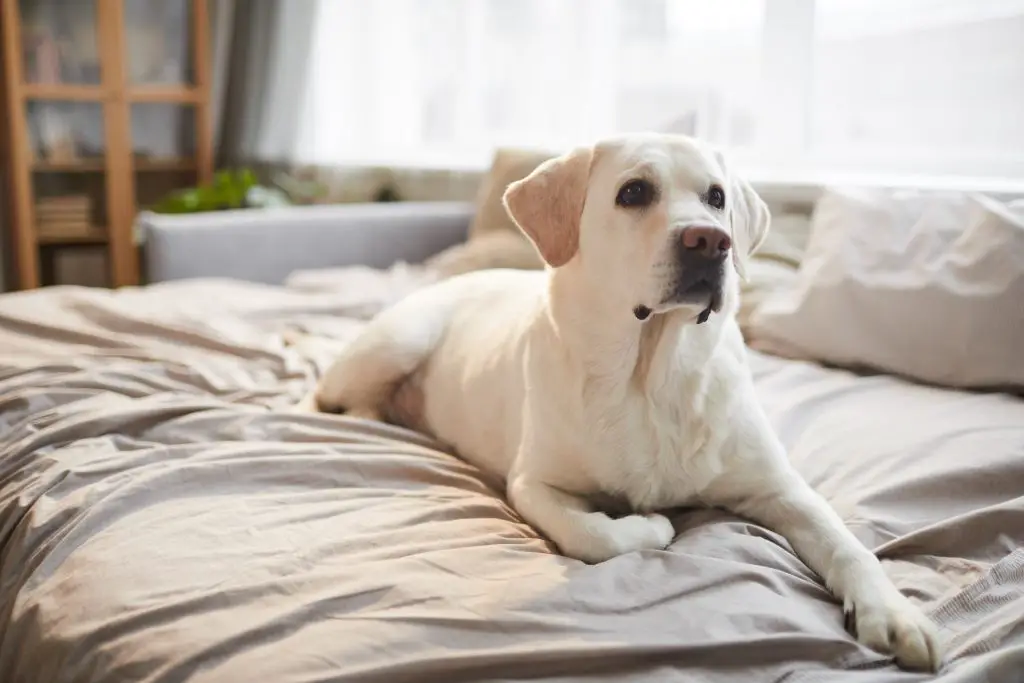Shedding season is the bane of every dog lover, and that includes those individuals who own Labrador Retrievers. Whenever your Lab sheds, this means you need to exert greater effort in keeping your house clean because there are sure to be dog hairs in every nook and cranny of our home and furnishings. This more strenuous cleaning routine is particularly necessary for people with allergies, who wrongfully believe that dog hairs are the cause of their frequent sneezing, runny noses, and itchy eyes.
While shaving a Labrador to reduce shedding, to keep them cool during summer, and other reasons may seem valid, in truth IT IS NOT NECESSARY!
Understanding the Nature of the Labrador Retriever’s Double Coat
To better understand the reason why you should not shave a Lab during shedding season, you need to know about the breed’s double coat.
The Labrador’s coat sheds all year round. However, heavier shedding – also known as “coat blows” – occurs when the quality of the coat transitions from a winter coat to a summer coat, and vice versa.
The Lab’s coat is composed of two layers. The top layer is called the outer coat or the guard coat. This layer consists of long, coarse, and abrasive guard hairs which repel water, ice, and dirt. The second layer is called the undercoat. Unlike the outer coat, the undercoat hairs are thick and dense, and very soft to the touch. While the outer coat protects your dog from irritating substances in its environment, the undercoat serves as a temperature regulator. This means, when it gets very hot during the summer, the undercoat keeps it cool while, during winter, it keeps your dog warm.
It is because of this unique structure and special functions of the double coat that you should not go about shaving a Labrador to reduce shedding.
Reasons Why You Should NEVER Shave Your Labrador
Let us enumerate the reasons why shaving your Lab is NEVER an option during shedding season or at any time in your dog’s life.
1) Shaving disrupts the protective integrity of your dog’s double coat.
When you shave your Lab, you disrupt the integrity of the double coat. If you have experienced shaving, you will observe that the hairs that grow back are thicker and coarser. The same thing happens to your Lab’s double coat, but the resulting coat gets worse. This is because the undercoat grows faster than the outer coat. The new coat that develops on your dog after shaving is a lot thicker, rougher, and coarser, so that it prevents air and wind from cooling your dog’s skin. Because of this, your Lab will feel much hotter. In addition, the thick and coarse quality of the outer coat makes it sticky, causing irritating dust and dirt to stick to the coat, so that it’s more difficult to keep your dog clean.
2) Disruption of the temperature regulatory function of the double coat
As we have mentioned above, shaving the double coat causes your dog to feel hotter or colder than they should be. This is because the quality of the undercoat hairs that grow back after a shave no longer serve the function of insulating your Lab against temperature changes.
So, during the summer, rather than cooling off, your Lab will be more sensitive to the heat and humidity. In the winter, your dog will feel much colder and be prone to chills.
3) Increases risks of sunburn and serious skin problems
With the disruption of its protective double coat, your dog becomes more prone to develop sunburn and more serious skin problems. The guard hairs of the outer coat function to reflect the sun’s rays. With the outer coat gone, harmful UV rays strike your dog’s skin directly, leading to sunburn and may even cause skin cancer to develop.
A shaved double coat may also cause other skin problems to appear. A good example is hot spots or pyotraumatic dermatitis or acute moist dermatitis. This skin condition is characterized by red and inflamed skin lesions that ooze pus whenever your dog scratches it. When your Lab’s double coat is shaved, you not only increase its risk of developing hot spots; any of these inflamed skin lesions that do develop take a much longer time to heal.
4) Shaving the double coat does not protect you from allergies
Many people with allergies believe that it is the dog’s hairs that is causing their sniffles and itchy eyes and noises. In truth, the irritant is dander, which are microscopic particles of skin that are being shed by your Lab. If you shave your dog, more dander is shed because you don’t have the coat to trap most of the dander in. So, instead of relieving your allergies, it will make your symptoms worse.
5) Shaving won’t solve the shedding problem
Even if you shave your dog, it will continue to shed. The problem is, given the hairs’ rougher, thicker, and coarser nature, it will stick harder to your furnishings and carpets, making them even more difficult to clean.
As you can see, shaving a Labrador to reduce shedding will do more harm than good. If you want to control excessive shedding, it is important that you regularly groom your dog, especially during seasons when shedding is heavy. Regular grooming keeps dog hairs and dander to a minimum. Also, make it a point to clean your home regularly. If you are concerned that your Lab is feeling hot during summer because of its coat, keep it hydrated by having fresh, cool water always available to it.
These simple tips will help to keep your Lab cool and fresh without shaving its gorgeous double coat.


